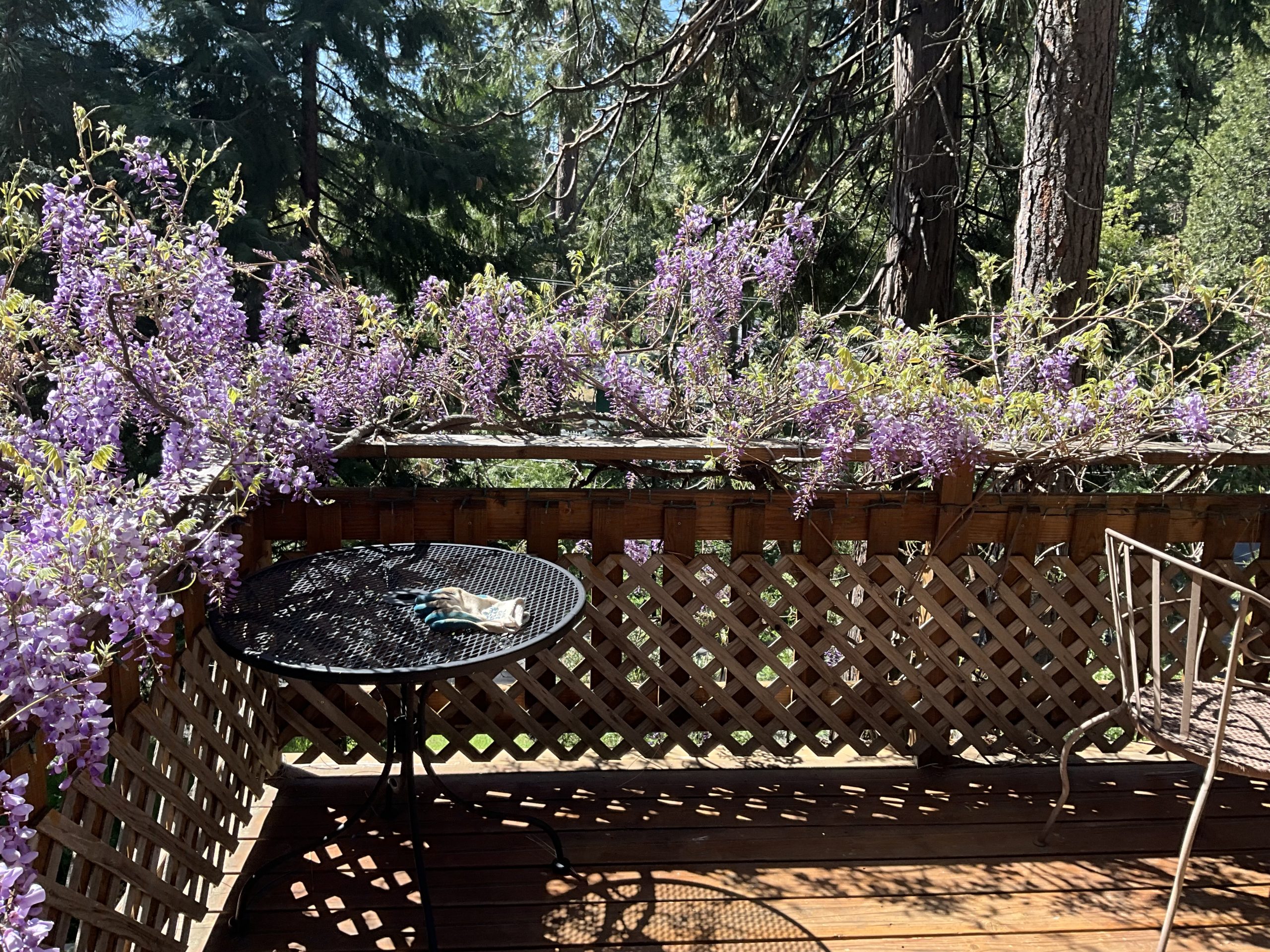Gardening at higher altitudes is an ongoing challenge. The effects of higher altitude on the landscape are harsh. The ground is drier; water evaporates faster. The climate is colder, often with freezing temperatures at night, even in late spring. Sunlight is more direct and intense, but shadows from pines and cedars cast cool, dark swatches of shade. Mountainous terrain results in more varied microclimates.
The altitude between 4,000 and 6,000 feet is classified as mid-montane, roughly between Tahoe and Yosemite. Cooler climate means a shorter growing season. Soil ranges from rocky to clayey, so some soil amendment is usually a must for a mountain garden.
Microclimates are a boon or a bane to the mountain gardener, depending on the gardener’s prowess in plant selection. It is important to the success of any garden to know what plants need in terms of temperature and water. Drought-resistant native plants will thrive on drier, hilly areas of the garden, while flowers and shrubs with greater water needs will be happier on flatter, more protected areas of the landscape. Creating rock gardens or raised beds are two ways to cope with dry, rocky hillsides because you can control soil content.
Granite breaks down and causes flinty, sandy conditions in some areas, while other areas have hard clay soils. When planting vegetables at higher altitudes, raised beds with amended soil is the best way to provide a nutrient-rich environment. Zillions of shed conifer needles create acidic soil. Either buy plants that like acidity – like roses, rhododendrons, ferns, azaleas, blueberries, columbine, lupine and most fruit crops – or amend the soil to make it more alkaline.
Mulch is a solution to the dry air and fast rate of water evaporation at higher altitudes. Mulching plants at 4,000 feet and above protects their root systems from frost and snow in the winter, and scorching sun in the summer. It is essential to slowing water run-off and evaporation. Compost can be used as mulch by spreading it over the surface of the soil. Mulch also inhibits weed growth and harmful insect infestation.
Late frosts and snow flatten early bloomers like daffodils and irises. There is nothing more jolly than a hillside of daffodils or more woebegone than those same flowers squished to the ground by snow after they have bloomed. They are hardy and deer resistant, though, so often pop right back up after the snow has melted. They don’t seem to mind the rocky, craggy outcropping of the mountainside and snow melt provides plenty of moisture for their entire blooming season.
Trees like ginkgo, crape myrtle, and magnolia do not fare well at higher altitudes. Although local nurseries often list the zones and cold hardiness of plants, they never talk about altitude. Some research is necessary to learn what grows up the mountains in order to avoid costly and discouraging mistakes. Once you discover what does grow at your level, use those as your main landscaping plants.
The challenges of mountain gardening are great but very rewarding. One of the pleasures of living up the mountain is enjoying the gentle breezes of summer wafting through a naturally shaded garden. The incense of the cedars mixed with the gentle scent of wisteria blossoms make this mountain aerie well worth the effort it took to develop.
Francie McGowan is a former University of California Cooperative Extension Master Gardener of Tuolumne County.
Read More Details
Finally We wish PressBee provided you with enough information of ( Spring Challenges of a Mountain Aerie )
Also on site :
- Authorities investigate after 8 injured in Colorado attack by man they say yelled ‘Free Palestine’
- Country Icon, 63, Cancels Show at Last Minute Amid Health Issues, Leaving Fans Irate
- Meta wants to replace its human workers with AI to review privacy and societal risks

